Blog » Travel Guides » Ultimate Vietnam Tr...
Ultimate Vietnam Travel Guide 2025: Your Complete Trip Planning Resource
This comprehensive 2025 Vietnam travel guide offers practical advice on visas, ideal travel seasons by region, cultural insights, safety tips, transportation, budget planning, and standout destinations to help travelers plan an enriching and smooth trip to Vietnam.
Key Takeaways
- Most travelers to Vietnam in 2025 need a visa or e-visa, but nationals from 12 countries and visitors to Phu Quoc Island have specific visa exemptions allowing short-term entry without a visa.
- The best time to visit Vietnam depends on the region, with November to April offering the most favorable weather across the country for sightseeing and outdoor activities.
- Vietnam’s diverse must-see destinations range from bustling cities like Hanoi and Ho Chi Minh City to hidden gems such as Ha Giang and Phong Nha-Ke Bang National Park, offering a mix of cultural and natural experiences.
- Travelers should respect Vietnamese cultural customs, including polite social behavior, traditional greetings, and temple etiquette, to deepen connections and avoid offenses.
- A variety of transportation options—domestic flights, trains, buses, motorbikes, and ride-hailing apps—make getting around Vietnam affordable and adaptable to different travel styles.
- Budget travelers can expect daily expenses between $20 and $35, while mid-range travelers typically spend $50 to $100 per day, covering accommodation, food, transportation, and activities.
Planning an unforgettable trip to Southeast Asia? Vietnam, with its rich history, stunning landscapes, and lively culture, growing to be a favorite spot for travelers in 2025.
Figuring out the essentials—from entry rules to cultural customs—might seem overwhelming at first, but having the right info can make your trip smoother and much more rewarding.
This guide covers everything you need to know about Vietnam’s visa requirements, walking you through entry procedures and the important documents to have on hand so your arrival goes off without a hitch.
But visas are just the start. A great Vietnam trip means knowing the best times to visit different regions, checking out famous cities along with hidden gems, and diving into the country’s amazing food scene.
We’ll cover your options for getting around, safety tips, budgeting advice, and handy checklists to keep things hassle-free. Whether you’re after busy city life, peaceful nature escapes, or authentic cultural experiences, this guide will help you plan a 2025 trip that fits exactly what you want.
Get ready to make the most of your Vietnam adventure by learning how to travel smarter, safer, and more affordably—all while enjoying the unique flavors and traditions that set this destination apart.
Dive in for expert tips that’ll help make your Vietnam travel experience in 2025 smooth, enriching, and truly unforgettable.
Vietnam Visa Requirements and Entry Guidelines for 2025
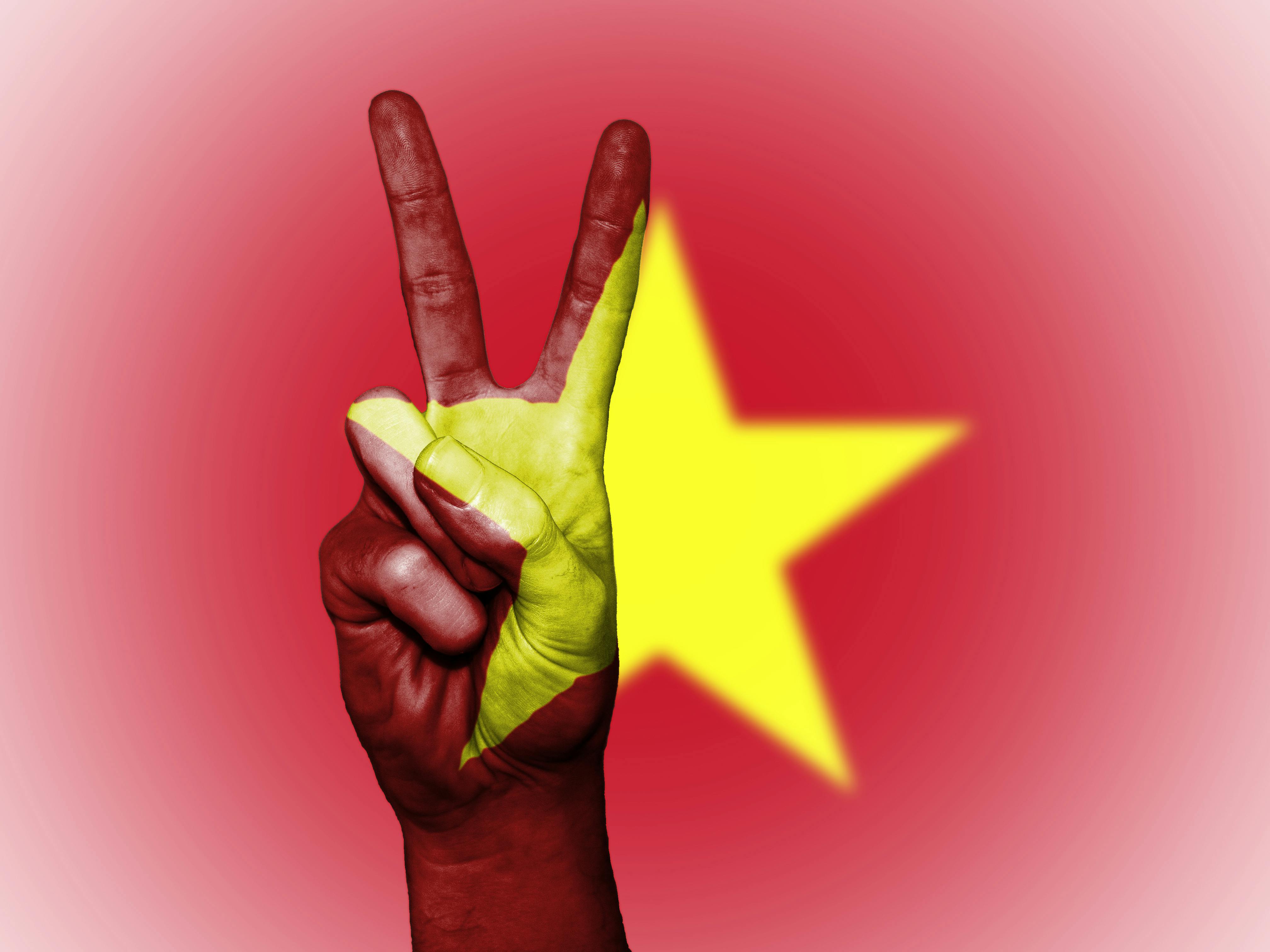
Vietnam Visa Requirements and Entry Guidelines for 2025
Before you jet off to Vietnam in 2025, it’s important to get a handle on the visa requirements. Every traveler needs a passport that’s valid for at least six months beyond the date you plan to leave Vietnam, and it should have at least one blank visa page. Missing this can mean getting turned away at immigration, which is the last thing you want.
Most visitors will need a visa or some form of pre-approval unless they qualify for a visa exemption. Vietnam offers a few visa options: traditional visas from embassies, the popular e-visa, and visa on arrival—which is only for air travelers who get pre-approval beforehand.
You can apply online through the government’s official e-visa portal. It’s pretty straightforward, usually takes 3 to 7 business days, and cuts down on paperwork, making entry faster and easier.
Who Needs a Visa to Enter Vietnam?
People from most countries will need a visa, but there are exceptions. Nationals from 12 countries—mostly European ones like Germany, France, Italy, Spain, and the UK—can enter visa-free for up to 45 days. This exemption lasts through March 2028 and lets you come back multiple times without waiting 30 days between visits. Plus, citizens from several Southeast Asian countries and others may also enter without a visa for shorter stays, usually between 14 and 30 days, which helps with tourism and business in the region.
One special note: anyone visiting just Phu Quoc Island gets a separate 30-day visa exemption no matter their nationality. This is a great way to encourage tourism to this beautiful beach spot. Whether you’re exploring one place or several, knowing these exemptions can save you some time, hassle, and cash.
Types of Visas and Application Procedures
Vietnam has different types of visas depending on why you’re visiting, each with its own rules and lengths of stay:
- Tourist Visa (DL): For vacations and sightseeing. Available as single or multiple entries, valid for up to 90 days.
- Business Visa (DN): For work or business activities. Offers flexible durations and multiple entries, great for entrepreneurs and professionals.
- Student Visa (DH): For study or internships, usually valid for a year and extendable, supporting educational exchanges.
- Other Visas: Work, family reunion, diplomatic, and special types exist. These usually require applying at an embassy and extra documents like invitation letters or contracts.
The easiest way for short-term visas—like tourist and business ones—is the official e-visa system, which takes applicants from all over the world. It gives visas valid up to 90 days, for single or multiple entries.
Fees start around $25 for single entry and go up for multiple entries. Processing is usually under a week, helping you plan without stressing.
Visa Exemptions and Special Cases
Besides the well-known 45-day exemption for 12 countries, nationals from places like Brunei, Myanmar, the Philippines, Cambodia, Indonesia, and Laos can enter visa-free for stays between 14 and 30 days. This makes regional travel easier. And if you’re just heading to Phu Quoc Island, there’s a simple 30-day exemption for everyone, making it a super popular gateway to Vietnam’s southern coast.
If an e-visa doesn’t work for your nationality or you need a different kind of visa than tourist, the visa on arrival option is available for air travelers with a pre-approval letter from licensed sponsors or travel agencies. It’s a handy backup but needs some coordination ahead—make sure to get everything sorted well before you fly to avoid headaches at the airport.
Important Documents to Carry
When you arrive in Vietnam, bring all your key documents: passport, visa or printed e-visa approval, any pre-approval letters if relevant, and proof of onward travel like return tickets. Airlines often check visa documents before boarding, so having physical or digital copies handy helps you avoid delays or even denial of boarding. If you have more than one passport, always stick to using the same one for both entry and exit to keep things smooth at immigration.
Good news: as of 2025, Vietnam has lifted all COVID-19 entry restrictions, so both vaccinated and unvaccinated travelers can enjoy a hassle-free arrival. Still, it’s wise to double-check official Vietnamese government and embassy sites before you leave, just in case there are last-minute updates.
| Requirement | Details |
|---|---|
| Passport Validity | At least 6 months beyond your planned stay, with one blank visa page |
| Visa Requirement | Required for most travelers; exceptions for visa-exempt countries and Phu Quoc visitors |
| Application Methods | E-visa online, embassy or consulate application, visa on arrival with pre-approval |
| E-visa Validity | Up to 90 days, single or multiple entries |
| Visa Exemption Countries | 12 countries with 45-day exemption; some countries have shorter visa-free stays |
| Health/COVID-19 Restrictions | No restrictions as of 2025 |
Best Times to Visit Vietnam: Month-by-Month Weather Breakdown

Best Times to Visit Vietnam: Month-by-Month Weather Breakdown
Vietnam’s climate changes quite a bit from north to south, so the best time to visit really depends on where you’re headed and what kind of weather you prefer. Stretching over 1,600 km, the country has a mix of weather patterns and seasons that vary by region. Here’s a month-by-month look to help with your 2025 plans.

Northern Vietnam (Hanoi, Ha Giang, Sapa): The sweet spot for visiting is between November and April, when it’s cool and dry—perfect for exploring the cities or trekking in the mountains. December and January can get pretty chilly, sometimes down to 10°C (50°F), and in the higher elevations, you might even see frost or a little snow, adding a unique charm. From May through October, expect hot, humid days and frequent heavy rains because it’s monsoon season, which might disrupt outdoor plans.
- November to April: Cool, dry, great for outdoor activities and sightseeing.
- May to October: Hot, humid, rainy—monsoon season with possible travel interruptions.

Central Vietnam (Hue, Da Nang, Hoi An, Nha Trang): This region enjoys a long dry season lasting from January to August, making it ideal for beach trips, cultural tours, and sightseeing. But watch out from September to December—typhoons and heavy rainstorms are common then, which sometimes cause flooding and can throw a wrench in travel plans. The good news? Temperatures stay warm through this period.
- January to August: Warm and dry, perfect for beaches and outdoor fun.
- September to December: Rainy and stormy with typhoons; be cautious.
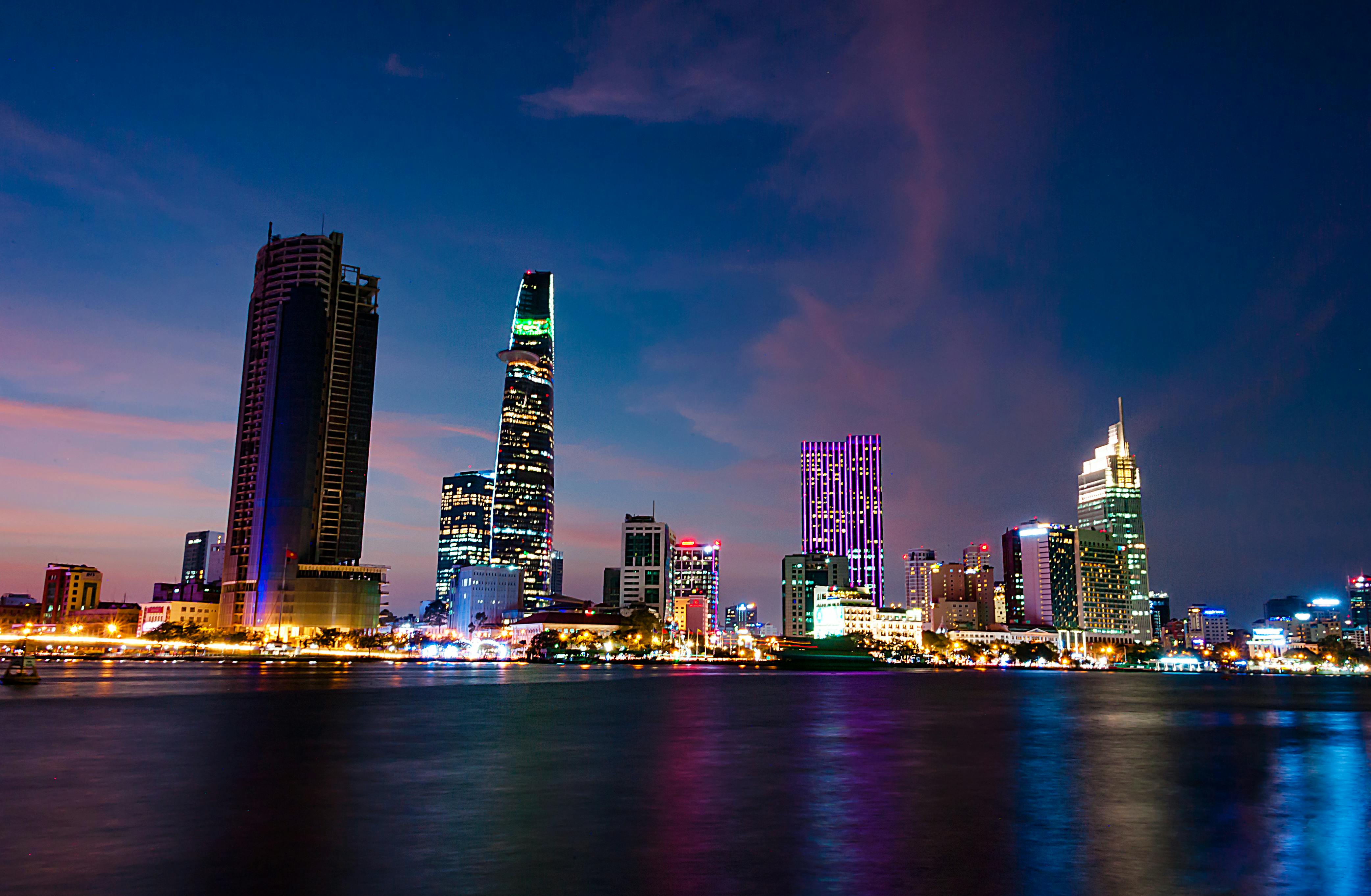
Southern Vietnam (Ho Chi Minh City, Mekong Delta): Known for a tropical climate, the south stays warm year-round but has clear wet and dry seasons. The dry season runs from November to April, bringing lots of sunshine—great for tours in the Mekong Delta or exploring cities. From May to October, expect regular afternoon showers and high humidity, especially June through August.
- November to April: Dry and sunny, perfect for travel and outdoor activities.
- May to October: Wet season with heavy, intermittent rains; humid.
All in all, November to April gives you the best shot at nice weather across much of Vietnam, which is why it’s peak tourist season. But traveling in shoulder months like March, April, or October means fewer crowds, better deals, and lush green scenery after recent rains—great if you love photography or nature.
| Region | Best Months to Visit | Notes |
|---|---|---|
| Northern Vietnam | November – April | Cool, dry; coldest in Dec & Jan, chance of frost or snow in mountains |
| Central Vietnam | January – August | Warm, dry; typhoon season from Sept to Dec |
| Southern Vietnam | November – April | Hot, dry; wet season May to Oct with heavy showers |
Planning your trip around these weather patterns will boost your chances of enjoying Vietnam’s stunning scenery, festivals, and outdoor fun. Thanks to its varied climate zones, there’s really never a “bad” time to visit—just the right time depending on what you want to see and do.
Top Must-See Destinations and Hidden Gems in Vietnam
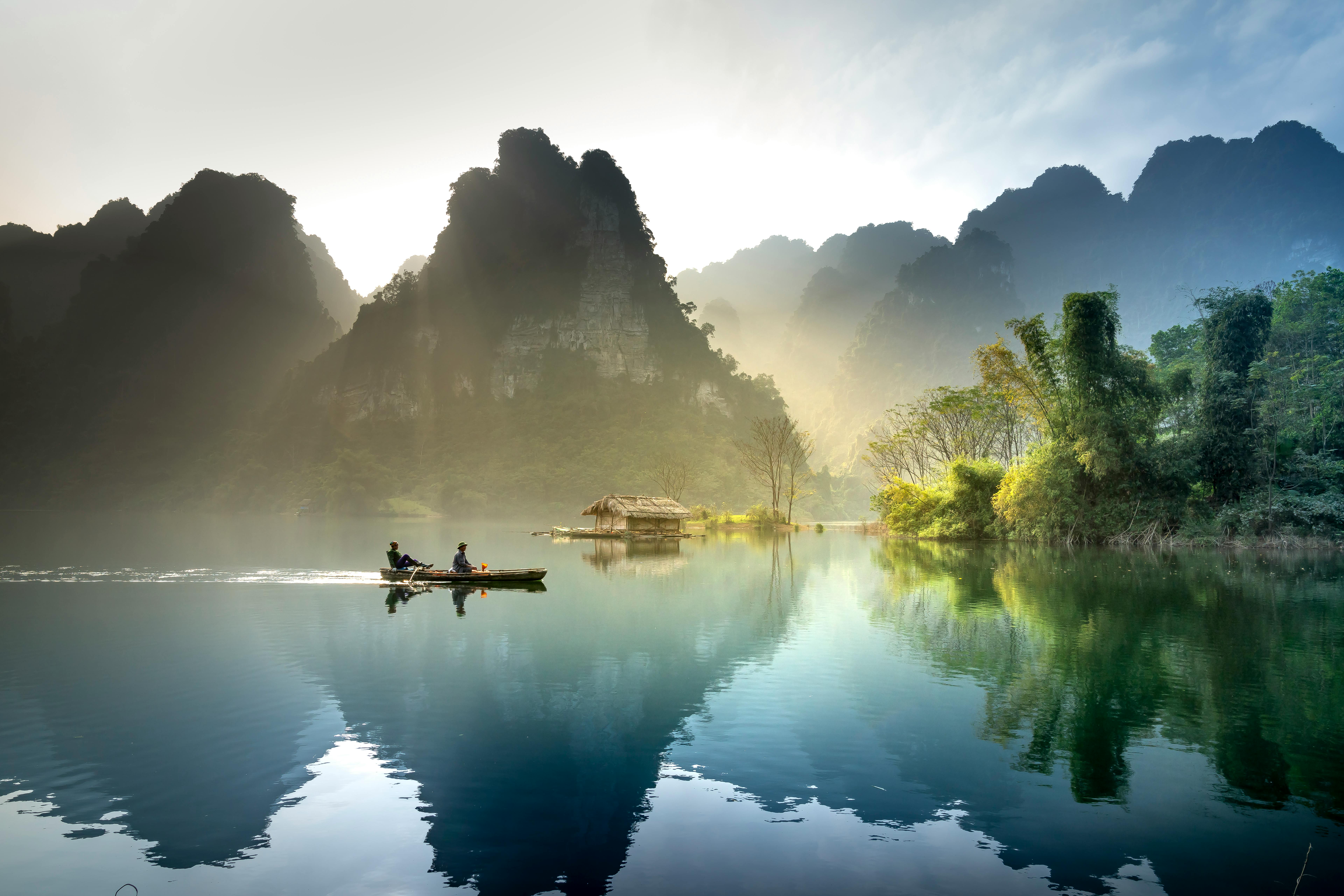
Top Must-See Destinations and Hidden Gems in Vietnam
Vietnam offers an amazing mix of well-known spots and hidden treasures, making it a fantastic choice whether you want to check off the famous highlights or get a taste of authentic local life.
The energetic capital Hanoi captivates visitors with its bustling Old Quarter, classic French architecture, and vibrant street food scene. Just a short drive away, Ha Long Bay amazes with limestone cliffs rising from emerald waters, although it does get crowded during peak times.
Central Vietnam’s Hoi An is a charming ancient town famous for its lovely riverside vibe and magical evenings lit by lanterns—perfect for romantic walks and handicraft shopping.
Close by, Hue, the former imperial capital, attracts history buffs with its grand citadel, royal tombs, and peaceful setting along the Perfume River.
In the south, Ho Chi Minh City buzzes with life, offering lively markets, rich historical sites, and a constantly evolving food scene.
Nature lovers will adore Sapa, nestled among terraced rice fields and home to diverse hill tribes, offering fantastic trekking and cultural experiences in the northern highlands.
- Phong Nha-Ke Bang National Park: A UNESCO site known for stunning caves like Son Doong, with hiking, boat tours, and spelunking away from the big crowds.
- Bai Tu Long Bay: Just northeast of Ha Long Bay, featuring equally impressive limestone formations and clear waters but with far fewer tourists—a great spot for peaceful cruises.
- Ha Giang Province: Famous for jaw-dropping mountain roads and authentic ethnic villages, it’s a favorite playground for motorbike adventurers seeking rural landscapes.
- Mai Chau: A tranquil valley with stilt houses and scenic rice paddies, ideal for experiencing rural Vietnam life and cozy homestays.
- Cat Ba National Park: Located on Cat Ba Island, known for its rich wildlife, hiking trails, and amazing views from Ngu Lam Peak over the bay.
- Ninh Binh (Tam Coc & Trang An): Sometimes called “Ha Long Bay on land,” it boasts dramatic karst scenery, winding rivers, and fewer tourists—perfect for boat rides and bike tours.
- Pu Luong Nature Reserve: Remote and mountainous, featuring spectacular rice terraces, waterfalls, and cultural exchanges with ethnic groups like Thai and Muong.
- Cao Bang: Home to the impressive Bản Giốc Waterfall, caves, and historic sites—perfect for nature and history lovers.
- Con Dao Islands: Quiet islands with pristine beaches, great snorkeling, and a poignant history as a former prison site, blending relaxation with culture.
- My Son Sanctuary: Ancient Hindu temple ruins near Hoi An, often overlooked but full of mystical history amidst lush surroundings.
- Tra Que Vegetable Village: A peaceful farming village near Hoi An where you can join locals in gardening and cooking, connecting with traditional rural life.
- Bach Ma National Park: Near Hue, with cool mountain air, lush forests, cascading waterfalls, and quiet hiking trails—great for nature lovers.
These spots show just how diverse Vietnam is—everything from lively cities to remote mountains, tranquil bays, and charming villages.
Hunting for hidden gems means fewer tourists and more genuine local connections, making your trip richer and more memorable. When putting together your 2025 Vietnam itinerary, mixing popular places with these off-the-beaten-track treasures will let you truly appreciate the country’s landscapes, history, and people.
Understanding Vietnam’s Diverse Culture and Customs
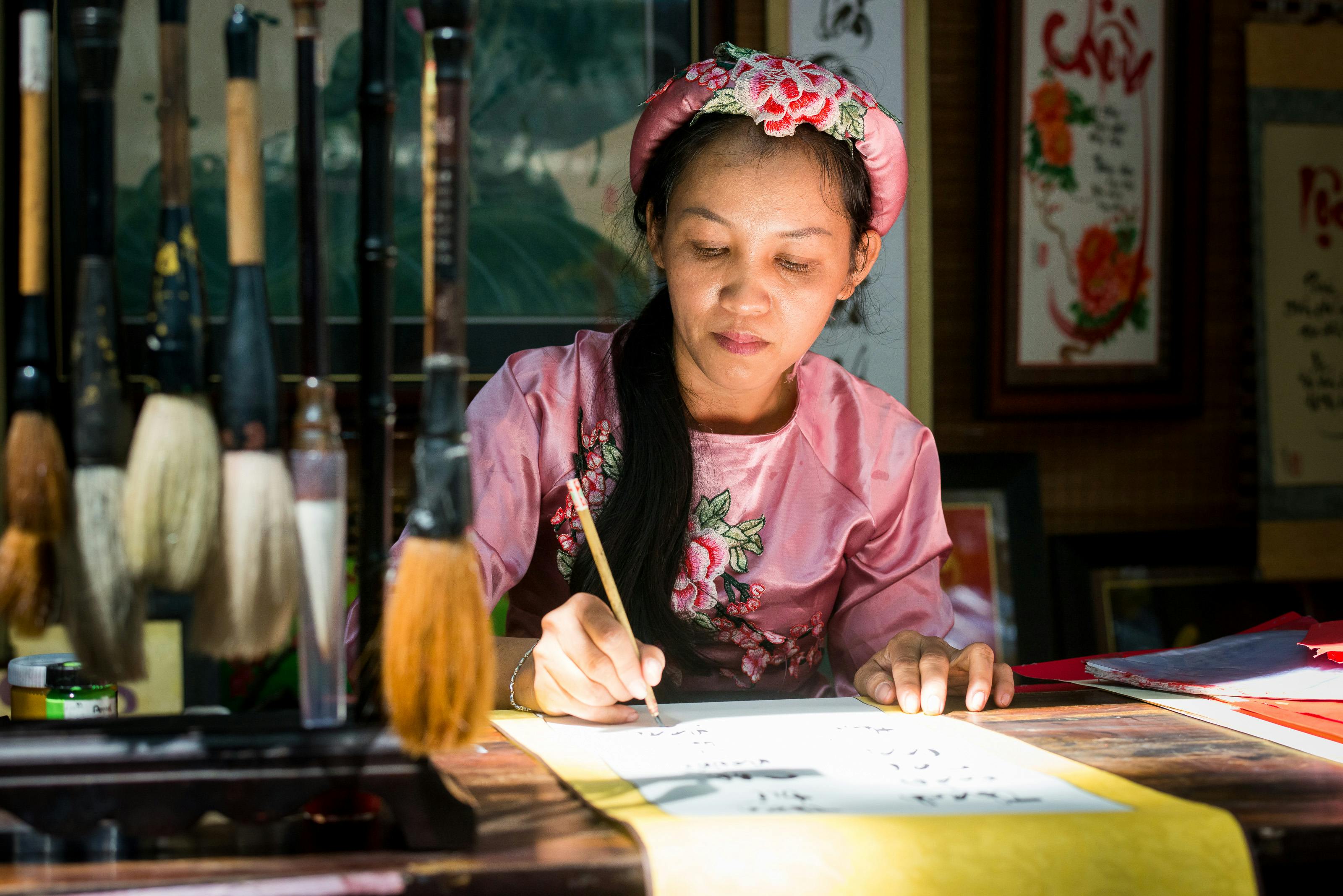
Understanding Vietnam’s Diverse Culture and Customs
Vietnam’s culture is a rich tapestry woven from thousands of years of local traditions and influences from China, France, and neighboring countries.
Family ties and ancestor worship lie at the heart of Vietnamese life, with most homes having an altar to honor deceased relatives. During big holidays like Tết Nguyên Đán (Lunar New Year), these practices take center stage, showing how deeply people respect their heritage and continuity.
You’ll also notice that Vietnamese culture blends spiritual ideas from Buddhism, Taoism, and Confucianism, promoting values like respect for elders, community harmony, and modesty.
Social interactions focus on saving “face,” encouraging polite and indirect communication to keep things smooth and avoid awkwardness. Traditional greetings tend to be respectful but reserved, and public displays of affection are rare, especially outside the big cities.
Taking off your shoes before entering homes or temples is common courtesy, so it’s good to follow suit as a visitor.
- Major Ethnic Groups: Vietnam officially recognizes 54 ethnic groups. The Kinh majority makes up about 85% of the population, mostly living in urban and lowland areas. Minority groups like the Tay, Thai, Hmong, Dao, Cham, and Khmer each bring their own languages, customs, clothing, and festivals that add to the country’s rich cultural mix.
- Traditional Costumes and Festivals: Different groups showcase their identity through distinctive clothing—like the elegant áo dài worn by many Kinh women, or the colorful embroidered outfits and silver jewelry of the Hmong and Dao peoples. Vietnam’s festival calendar is lively, with nationwide events like Tet Lunar New Year, plus regional celebrations such as the Lim Festival’s folk singing in Bac Ninh, the Hue Festival honoring royal heritage, and the Perfume Pagoda pilgrimage near Hanoi.
- Customs to Remember: When dining, it’s polite to wait for the eldest person to start and to use both hands when passing things as a sign of respect. Avoid sticking chopsticks upright in rice—it’s seen as bad luck. Gift-giving is welcomed, but stay away from funeral-related items like handkerchiefs or clocks. Be respectful in temples by keeping quiet, don’t point your feet at altars, and remember that direct confrontations are usually avoided.
- Why Cultural Awareness Matters: Understanding and respecting Vietnam’s customs will deepen your travel experience, help you connect genuinely with locals, and prevent accidental offenses. It turns a simple visit into a rewarding cultural immersion.
Savoring Vietnamese Cuisine: Food Highlights and Where to Find Them
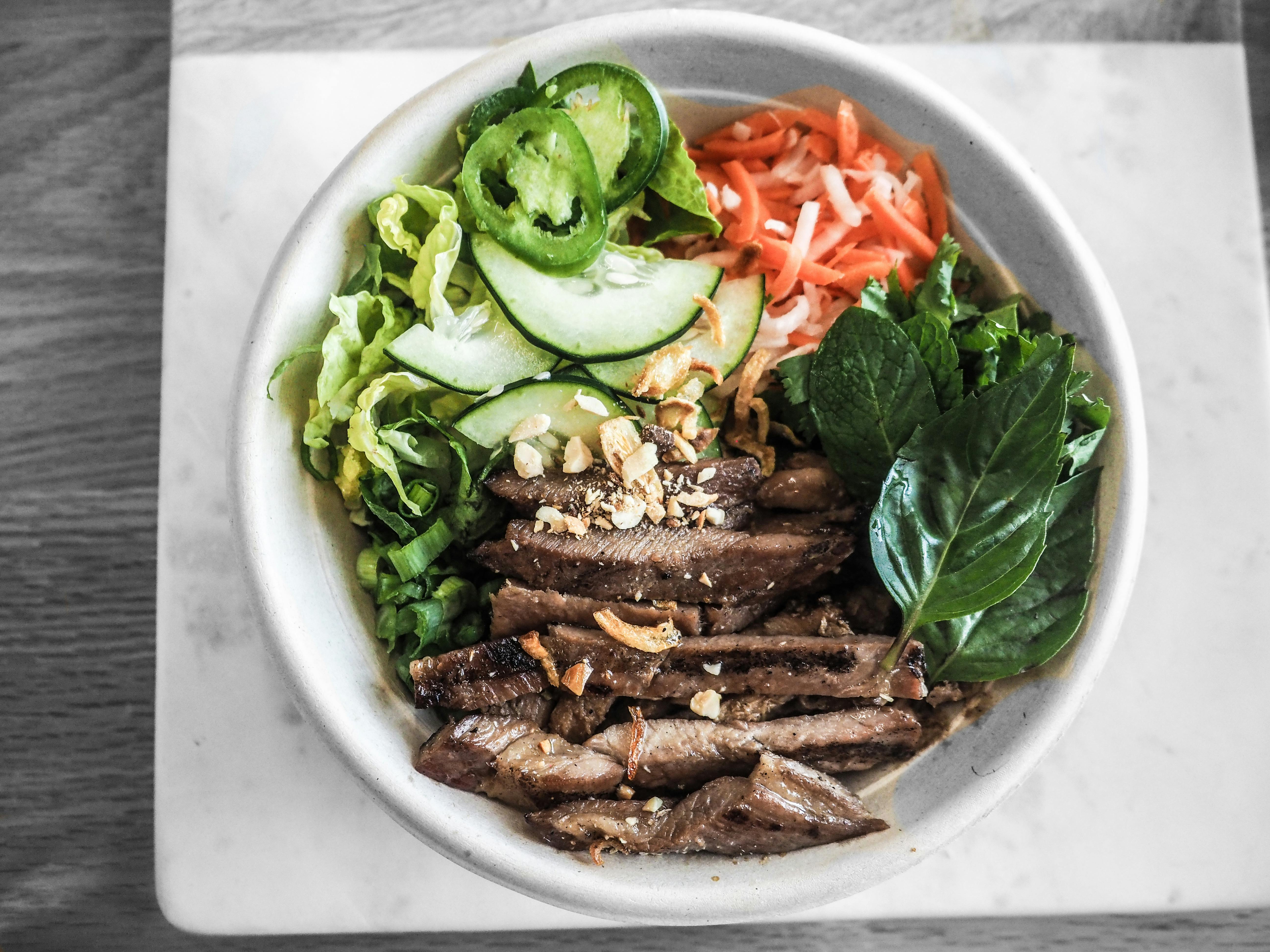
Must-Try Vietnamese Dishes and Where to Find Them
Vietnamese food is a delight—fresh herbs, savory broths, and lively spices combine for unforgettable flavors. Don’t miss Phở, the classic noodle soup with beef or chicken. It’s best tasted in Hanoi or Ho Chi Minh City, where every region puts its own spin on the recipe. Another favorite is Bánh Mì, the crispy baguette sandwich filled with tasty meats and pickled veggies, available everywhere from street carts to cozy cafes.
Try Bún Chả, a Hanoi specialty featuring grilled pork over rice noodles with fresh herbs and dipping sauce—famously enjoyed at Bun Cha Huong Lien, where even former President Obama stopped.
For seafood fans, Bún Chả Cá in coastal towns like Nha Trang offers flavorful fish cake soup with noodles and herbs. Don’t miss Bò Lá Lốt, minced beef wrapped in betel leaves and grilled—an especially popular street food in southern Vietnam.
- Phở – Widely available; best tries are in Hanoi and Ho Chi Minh City.
- Bánh Mì – Found at street stands and cafés across Vietnam.
- Bún Chả – Hanoi’s Old Quarter is the place to go.
- Bún Chả Cá – Try it in coastal cities like Nha Trang.
- Bò Lá Lốt – Common in southern Vietnam, especially Ho Chi Minh City.
Street Food Safety and Regional Culinary Differences
Vietnam’s street food scene is a treasure trove of tastes, but safety is key. Stick to dishes that are freshly cooked and served hot, since high heat kills most germs.
It’s best to avoid raw or undercooked foods unless you trust the vendor’s hygiene. Look for busy stalls with quick turnover and vendors who keep money separate from food handling for added safety.
Watch out for water and ice, which can be sources of contamination. Drink only bottled or boiled water and skip the ice unless you know it’s safe. Washing your hands or using sanitizer before meals is a smart move. Checking out local recommendations or trusted travel sites can point you toward the best and safest street eats.
| Region | Street Food Specialties |
|---|---|
| North (Hanoi & surrounds) | Phở, Bún Chả, Bánh Cuốn (steamed rice rolls) |
| Central (Hue, Da Nang, Hoi An) | Mì Quảng (turmeric noodles), Bánh Xèo (crispy pancakes), Bún Bò Huế (spicy beef noodle soup) |
| South (Ho Chi Minh City) | Bánh Mì, Cơm Tấm (broken rice with grilled pork), Hủ Tiếu (noodle soup) |
Each region has its own style: the north favors simple, balanced flavors with herbs and light broths; central Vietnam dishes are bolder and spicier, often using chili and fermentation; and southern cuisine is sweeter with lots of fresh herbs and tropical fruits. Sampling foods from each region gives you a delicious tour of Vietnam’s diverse culinary culture.
For a great variety and atmosphere, check out popular food markets like Ben Thanh Market in Ho Chi Minh City or Dong Xuan Market in Hanoi, where you can taste loads of authentic dishes all in one lively place.
Navigating Vietnam: Transportation Options and Travel Tips

Navigating Vietnam: Transportation Options and Travel Tips
Getting around Vietnam in 2025 is a breeze thanks to tons of transport choices for every budget and style. Whether you want quick flights, scenic train rides, or the freedom of a motorbike, Vietnam has it all—affordable, convenient, and accessible.
For longer trips, domestic flights are your fastest and easiest option. Airlines like Vietnam Airlines, VietJet Air, and Bamboo Airways fly multiple times daily between hubs such as Hanoi, Da Nang, and Ho Chi Minh City. Booking early usually saves you money and guarantees seats, especially outside busy times.
- Open Tour Buses: Great for budget travelers who want flexibility. Companies like Sinh Tourist and Phuong Trang offer “open ticket” options so you can hop on and off between cities over days or weeks. These buses come in all kinds—from basic to luxury—and usually have AC and Wi-Fi.
- Train Travel: The famous “Reunification Express” connects Hanoi and Ho Chi Minh City with stops in Hue and Da Nang. Trains offer comfy sleeper cabins and amazing views, perfect if you want to take it slow even if the trip takes longer.
- Motorbike Rentals: A classic way to explore Vietnam’s countryside or cities at your own pace. Rentals abound, starting around $5–10 a day. Always wear a helmet, be careful, and know how to handle busy traffic before hitting the road.
- Ride-Hailing Apps: Grab, Be, and Xanh SM dominate cities for car and motorbike rides. They offer real-time tracking, cashless payment, and are affordable—ideal for airport rides or quick trips.
- Private Cars and Taxis: For groups or families wanting comfort and freedom, private cars rented through hotels or agencies work well, though they cost more than public transit.
Vietnamese cities are slowly expanding public transit. Hanoi has a large bus network and is rolling out new metro lines to cut traffic. Ho Chi Minh City’s metro line 1 is running alongside air-conditioned buses and river buses, offering alternatives to the usual motorbike crowds during rush hour.
Just a tip: rush hour in big cities is typically 6:30–8:30 AM and 6:00–6:30 PM, so plan your trips to avoid those busy times. When crossing streets, keep a steady pace—drivers expect pedestrians to keep moving steadily, and sudden stops can cause accidents. Use helmets, book through official channels or trusted agencies, and always stay alert on busy roads to keep your travels smooth.
| Transport Mode | Best For | Key Providers/Apps | Notable Features |
|---|---|---|---|
| Domestic Flights | Long distances, fast travel | Vietnam Airlines, VietJet, Bamboo Airways | Fast and frequent, connects major cities |
| Open Tour Buses | Budget travelers, flexible itineraries | Sinh Tourist, Phuong Trang (Futa Bus), Mai Linh | Hop-on-hop-off tickets, AC, Wi-Fi |
| Train Travel | Scenic routes, overnight trips | Vietnam Railways | Reclining sleepers, panoramic views, relaxed pace |
| Motorbike Rentals | Adventurous exploring, rural areas | Local rental shops | High flexibility, helmet required, traffic caution |
| Ride-Hailing Apps | Urban short trips, airport transfers | Grab, Be, Xanh SM | Real-time tracking, cashless payment, affordable |
| Private Cars & Taxis | Groups, families, comfort | Hotels, agencies, apps | Custom routes, privacy, pricier |
“When crossing streets in busy Vietnamese cities, keep moving at a steady pace—drivers expect pedestrians to proceed steadily. This simple approach helps avoid confusion and keeps you safe.”
Local Travel Expert
Ensuring Safety and Health During Your Vietnam Trip
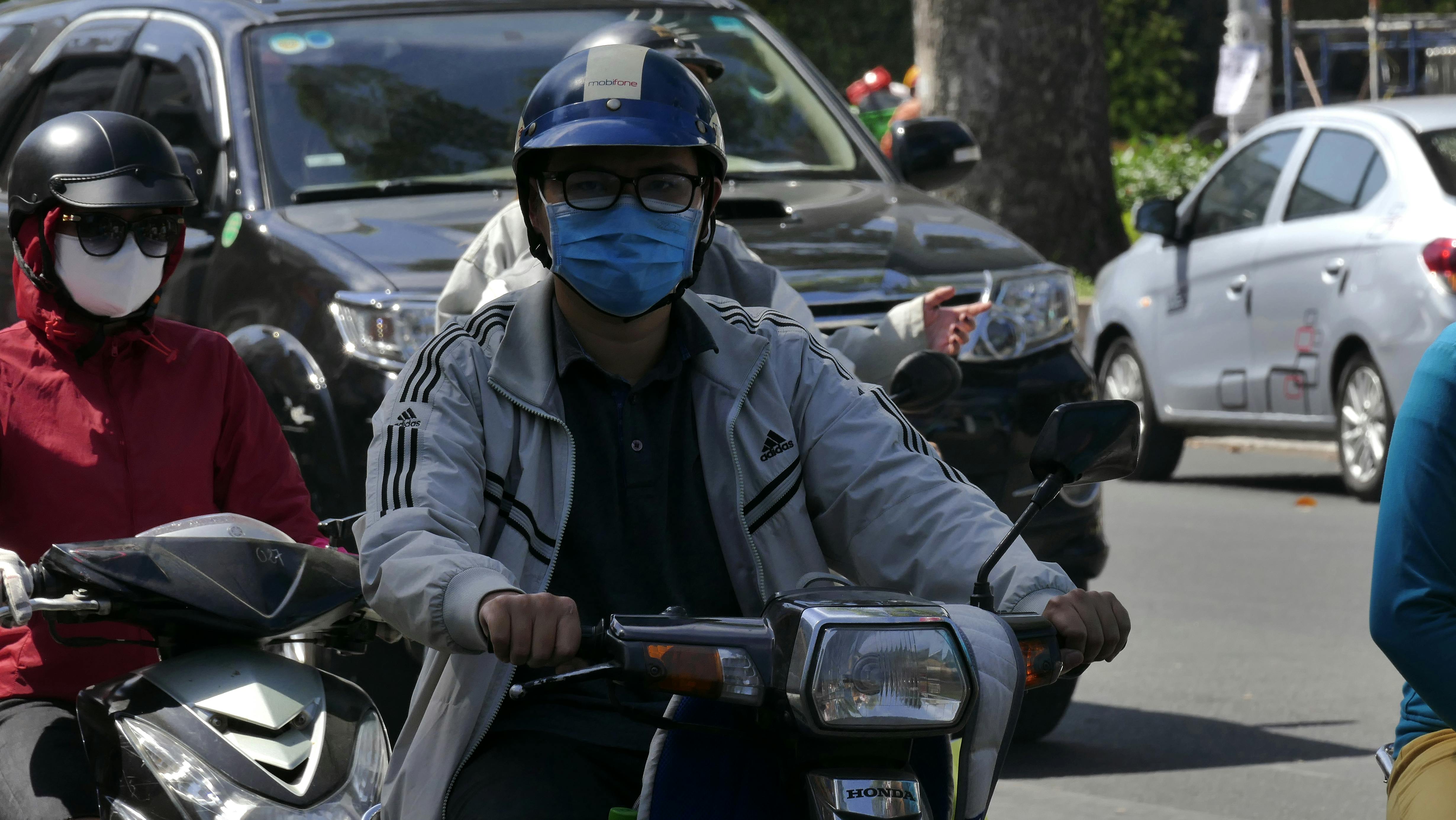
Ensuring Safety and Health During Your Vietnam Trip
To have a safe and healthy Vietnam trip in 2025, smart prep is key. First, get good travel insurance that covers medical emergencies, evacuation, and trip cancellations. See your doctor at least two months before you leave to talk about vaccines like hepatitis A and B, typhoid, and tetanus. Bring enough prescription meds plus a doctor’s note if you have chronic conditions or allergies—that’ll help avoid any hassles at customs.
Vietnam’s tropical climate means there’s a risk of mosquito-borne illnesses like dengue fever and malaria, especially in rural or mountainous areas. Protect yourself by using insect repellent with DEET, wearing long sleeves and pants during dawn and dusk when mosquitoes are most active, and think about preventive meds if you’re visiting malaria spots. Try to limit outdoor time during peak mosquito hours too. Don’t forget sun protection all year round—use sunscreen with high SPF, wear hats and sunglasses, and stay hydrated to avoid heat-related troubles.
- Food and Water Safety: Stick to bottled or boiled water—tap water and ice from unknown sources can be risky. Eat at busy spots where food turnover is high to make sure meals are fresh. Avoid raw or undercooked meats and seafood. Peel fruits yourself when you can.
- Personal Safety: Use trustworthy transport like Mai Linh or Vinasun taxis, or ride-hailing apps like Grab. When renting motorbikes, check the condition and avoid handing over your passport as a deposit. Stay alert in crowded places to prevent pickpocketing—anti-theft bags or money belts come in handy.
- Common Scams to Avoid: Be careful of taxi drivers who skip meters or take longer routes, vendors who confuse currency, fake travel agencies selling bogus tickets, and fake police asking for bribes. Always double-check prices and book tours or tickets through reliable sources.
- Emergency Preparedness: Know where reputable hospitals are, especially outside main cities like Hanoi, Da Nang, or Ho Chi Minh City. Carry a small medical kit with pain relievers, anti-itch creams, anti-diarrheal meds, and basic first aid supplies for minor issues.
Healthcare quality varies—big cities have international-standard clinics with English-speaking staff, but rural areas may have limited options and might ask for upfront cash payments. In serious emergencies, evacuation to better hospitals might be needed, which is why solid travel insurance is so important.
Also, keep an eye on the weather, especially during monsoon and typhoon seasons, and respect local customs to have a respectful, hassle-free visit. With good planning and a bit of caution, you’ll enjoy Vietnam’s vibrant culture while staying safe and healthy throughout your trip.
Budget Planning and Cost Expectations for 2025 Vietnam Travel
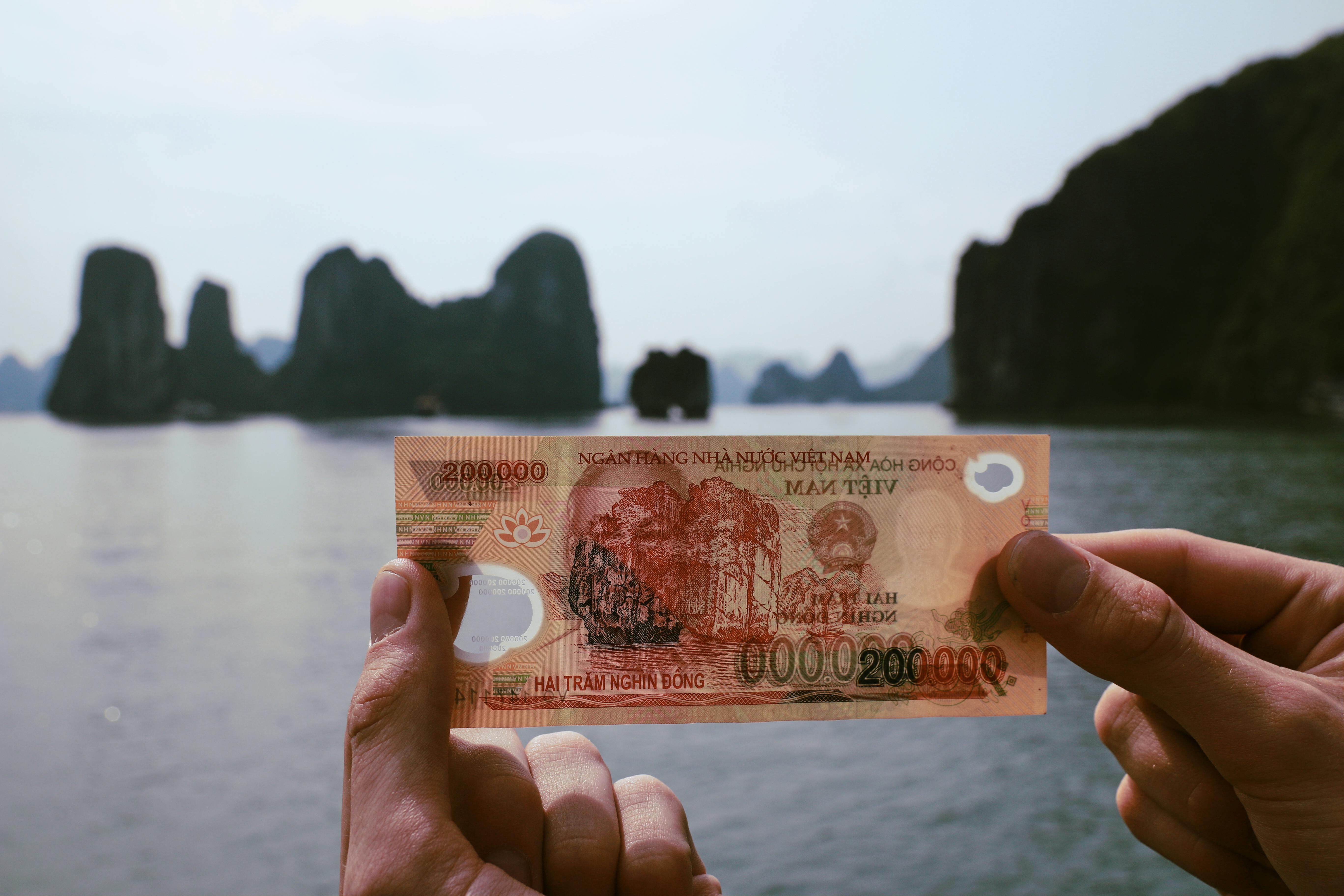
Budget Planning and Cost Expectations for 2025 Vietnam Travel
Vietnam remains a budget-friendly and flexible travel spot in 2025. How much you spend each day depends mostly on your style, where you go, and what you want to do. If you’re keeping costs low, plan around $20 to $35 per day to cover simple accommodation like hostels or guesthouses, street food, local transport, and inexpensive activities.
If you prefer things a bit more comfortable, budget about $50 to $100 per day. This covers private rooms or boutique hotels, meals at nicer restaurants, occasional taxis or flights, and entrance fees for cultural spots or tours. For a luxury experience, expect to spend $200 or more daily, enjoying high-end hotels, gourmet meals, private guides, and custom tours.
- Accommodation: Budget stays cost $5–15 per night in hostels or guesthouses. Mid-range hotels run $25–50 per night, while luxury lodgings start around $60 and can go higher depending on location and amenities.
- Food and Drink: Street food is super cheap—often under $2 per dish—and a $10 to $15 daily food budget works for budget travelers. Mid-range diners might spend $15–30 daily, and fancy dining can easily go over $40 a day.
- Transportation: Local buses and trains usually cost $1 to $15 per ride. Motorbike rentals average about $5 a day, with taxis and ride-hailing services offering low-cost short trips. Domestic flights range between $50 and $150 one way, based on timing and airline.
- Activities and Entertainment: Set aside $5 to $10 a day for free or low-cost attractions like museums or parks. More involved tours, boat trips, or cultural experiences tend to run $20 to $60 per day.
Prices vary by region—Hanoi and Ho Chi Minh City typically cost more than smaller towns or rural areas due to higher demand and development. Costs also increase during peak seasons and festivals, so booking ahead can save you a good chunk. It’s smart to have a little extra in your budget for unexpected expenses or special cultural experiences that make your trip unique.
Here’s a simple daily cost breakdown by travel style for 2025 Vietnam:
| Category | Budget Travelers (USD) | Mid-range Travelers (USD) |
|---|---|---|
| Accommodation | $5–$15 | $25–$50 |
| Food & Drink | $10–$15 | $15–$30 |
| Transportation | $1–$5 | $10–$20 |
| Activities & Entertainment | $5–$10 | $20–$40 |
| Total Daily Cost | $20–$35 | $50–$100 |
All in all, Vietnam offers great value in 2025. Whether you’re backpacking on a tight budget or wanting a comfy mid-range trip, you can explore diverse places, soak in rich culture, and enjoy delicious food without breaking the bank. Careful planning will help you get the most fun without overspending.
Essential Travel Checklists and Tips for Vietnam

Essential Travel Checklists and Tips for Vietnam
Getting ready for Vietnam in 2025 means having a solid checklist—from packing to staying connected and managing money. Start with your important documents: make sure your passport is valid for six months beyond your stay. If you need a visa or e-visa, get that sorted well before you leave and bring both digital and hard copies of your visa approval, tickets, insurance, and any vaccination records. Backups will save you headaches in emergencies.
For money, bring some Vietnamese dong (VND) before arrival or know where to exchange currency safely—official banks or licensed counters offer the best rates. Cards are accepted more in cities, but cash is still king outside urban areas and small markets. Travel cards like Wise or Revolut are useful, and don’t forget to tell your bank you’re traveling so your cards don’t get blocked. Keep small bills handy, as many vendors can’t make change for big notes.
- Packing Essentials: Lightweight, quick-dry clothes; a rain jacket or poncho depending on season; modest outfits for temple visits (cover shoulders and knees); comfortable walking shoes; swimwear; sunhat; and sunglasses for sun protection.
- Electronics & Accessories: Phone and charger; universal power adapter (Vietnam uses types A, C, and F plugs); power bank; camera; refillable water bottle; travel towel; sunscreen; insect repellent; and a small first aid kit.
- Health Prep: Bring any prescription meds plus basics like anti-diarrheal and painkillers, and update vaccines at least eight weeks before you go.
For staying connected, local prepaid SIM cards from Viettel, Mobifone, or Vinaphone are easy to get at airports or convenience stores and offer good data and call packages. Or try an eSIM before arrival to set up service right away—handy for short trips or business travelers.
Don’t forget useful smartphone apps for Vietnam travel. Grab is a must-have for ride-hailing in cities. Google Maps will keep you on track. Google Translate helps with language, and currency converters make managing money easier. Apps like Agoda or Booking.com make booking hotels simple, while transportation apps help with bus and train tickets. Checking local weather apps is wise too since Vietnam’s climate varies a lot by region.
“Packing smart and having essential apps ready can transform your Vietnam experience from stressful to seamless.”
Travel Expert
Final Thoughts
This Ultimate Vietnam Travel Guide for 2025 has given you the lowdown on everything—from visas and the best times to visit, to top destinations and must-try dishes.
Knowing the culture, staying safe and healthy, getting around smartly, and budgeting carefully are all keys to an amazing, hassle-free trip.
With these tips, you’re fully ready to explore Vietnam’s rich heritage and stunning landscapes with confidence and ease.
As you wrap up your planning, remember to stay flexible and open to new experiences—that’s what really makes a trip special.
Embrace the adventure, savor the flavors, and connect genuinely with locals to make the most of your Vietnam visit in 2025.
Start putting your itinerary together today and get ready for a journey full of discovery, excitement, and lasting memories.
- Key Takeaways
- Vietnam Visa Requirements and Entry Guidelines for 2025
- Best Times to Visit Vietnam: Month-by-Month Weather Breakdown
- Top Must-See Destinations and Hidden Gems in Vietnam
- Understanding Vietnam's Diverse Culture and Customs
- Savoring Vietnamese Cuisine: Food Highlights and Where to Find Them
- Navigating Vietnam: Transportation Options and Travel Tips
- Ensuring Safety and Health During Your Vietnam Trip
- Budget Planning and Cost Expectations for 2025 Vietnam Travel
- Essential Travel Checklists and Tips for Vietnam
- Final Thoughts
Get your FREE Monstera Art download
Join our WanderLife Studios mailing list to get updates about our work and be the first to know about upcoming art products.
As a Thank You Gift, you will get this wonderful hand-drawn Monstera Line Art as a digital download for FREE .
